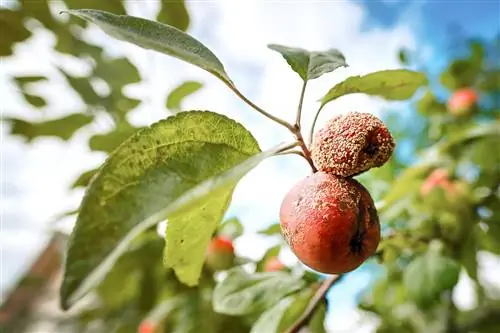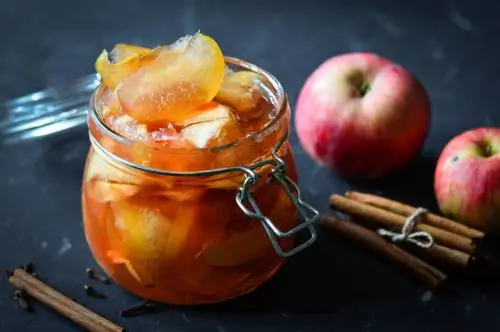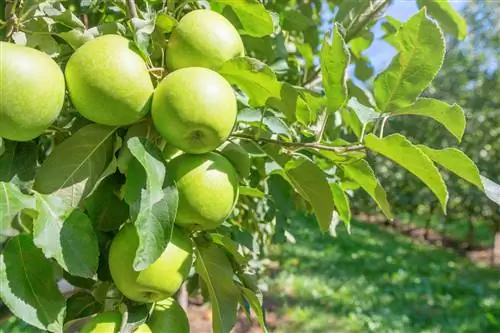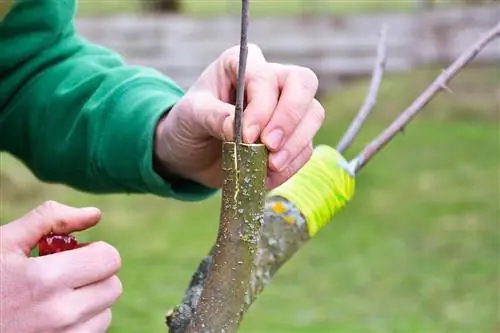- Author admin [email protected].
- Public 2023-12-16 16:46.
- Last modified 2025-10-04 22:19.
In early summer the apple tree promised to produce a rich harvest. But if the apples continue to grow, they do not ripen as hoped and instead rot. You can find out in this article what the cause of this could be and how you can save the fruit.
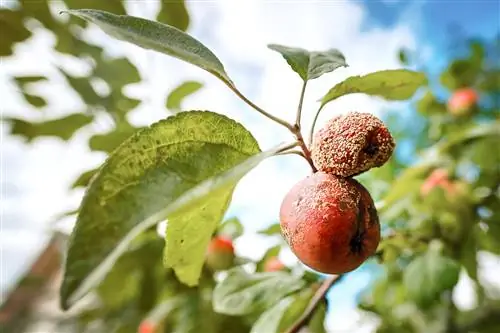
Why do all the apples on the apple tree rot?
Themost common triggeris a fungal infection, theMonilia fruit rot In many cases, pest infestation is also involved. You can fight both the rot and the pest insects quite easily, so that you can expect good yields again next year.
How do I recognize whether apples are rotting or ripening?
Ripening applesfeelcrunchy, but due to the slightly different stages of ripening they can bedifferences in size and colorshow.
You can recognize rot by the following features:
- The brown areas are mushy-soft and enlarge.
- An injury to the shell is often noticeable.
- The fruits give off an unpleasant, sweet, musty smell.
- The affected areas are often covered by a fungal lawn.
- The apples shrivel on the tree, dry out or fall off.
- In the final stage, the fruit mummies develop black, leathery skin.
Could Monilia rot be the cause?
If all the apples on the tree rot,almost alwaysisMonilia rot is the trigger. This fungal infection, which spreads rapidly to numerous apple varieties, is caused by the pathogen Monilia fructigena. If this is not fought consistently, it can destroy the entire harvest.
- Immediately remove all infected apples and dispose of them in household waste.
- Cut out branches generously where you see fungal spores.
- Ensure good he alth of the apple tree with plant strengtheners (€83.00 on Amazon).
Could pests cause apples on the tree to rot?
Accompanyingthe pathogens of Monilia rot is often a strongpest infestationwith theapple web mothor theapple moth.
- Search the tree for the yellowish, black-spotted web moth caterpillars. Collect these and spray with soft soap solution.
- The larvae of the codling moth are also yellowish-white, but have no spots. First collect these and then treat the apple tree with wormwood manure.
Does very dense foliage promote rot on apples?
Lots of foliageand dense fruit growth create, due to thelack of air circulation, optimal conditions for thespread of Monilia rot. After rain showers, leaves and fruits cannot dry out, a warm, humid climate develops and the fungus spreads extremely quickly.
How can I prevent apples from rotting next year?
The rotting of apples in the coming year can be easily prevented byconsistently collecting the fruit mummies and rotten apples. This prevents the fungal spores from overwintering in the soil and spreading again in the spring. Also remove the fallen leaves and dispose of them in the household waste.
Tip
Apple mildew also causes rot
If Monilia rot is not responsible for the crop failure, the apple tree could be affected by powdery mildew. This can already be seen in spring on the leaves and flowers. In the next few weeks, the mealy coating, caused by a fungus, spreads to the fruits and destroys the harvest.

